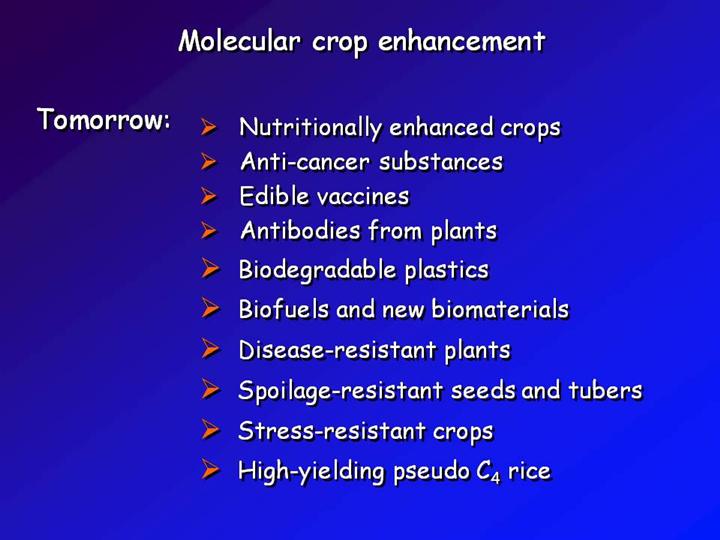| front |1 |2 |3 |4 |5 |6 |7 |8 |9 |10 |11 |12 |13 |14 |15 |16 |17 |18 |19 |20 |21 |22 |23 |24 |25 |26 |27 |review |
 |
In summary, it has now become possible to modify plants in ways that were simply impossible before to create nutritionally enhanced crops, vaccines, drugs, and a variety of new kinds of biological and biodegradable materials. As well, molecular methods can be used to protect plants from diseases and stress associated with climate change. However, to be able to use these broadly, we must consider their potential impacts on health and the environment. We must also devise regulations that are based on the growing body of experience and evidene accumulated over the years of their development testing and use. At present, there remain considerable regulatory impediments to the widespread use of molecular crop enhancement. Go to the Part II of this lecture If you have any comments or questions, please send a message to super1@pitt.edu |
Search inside of Supercourse and lectures in HTML or PPT format